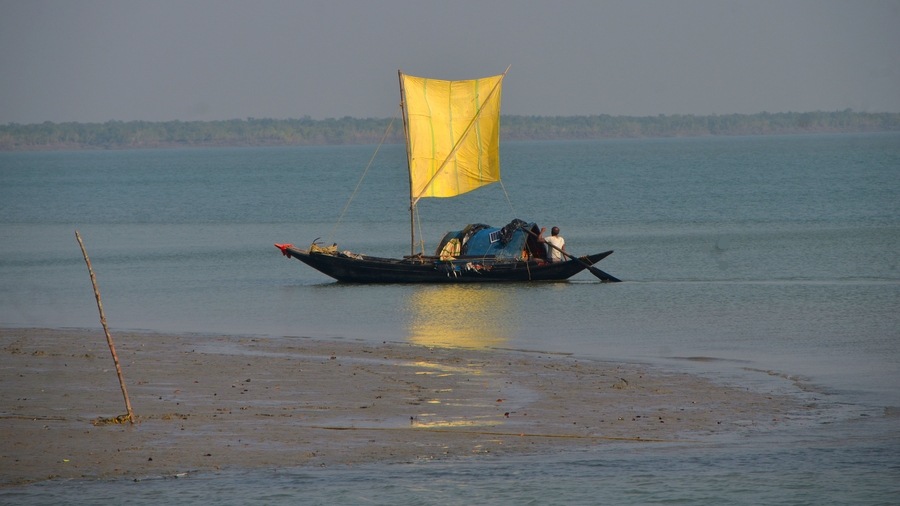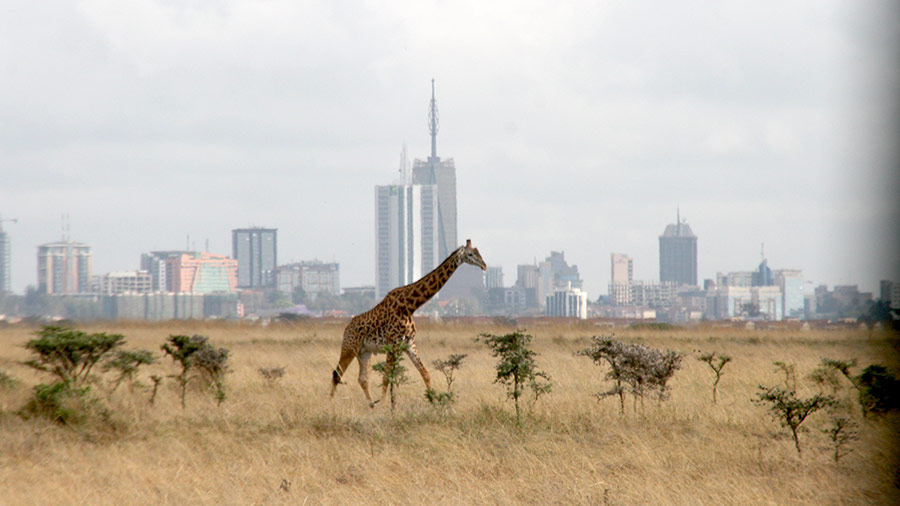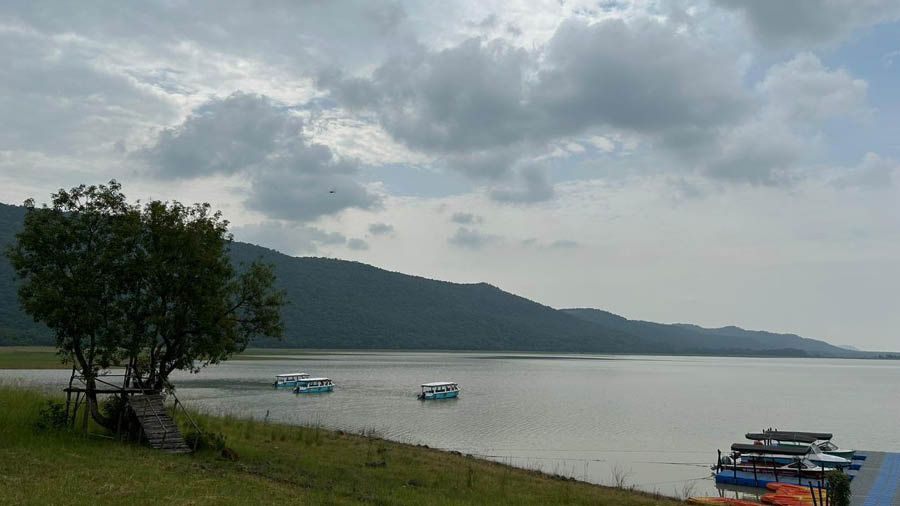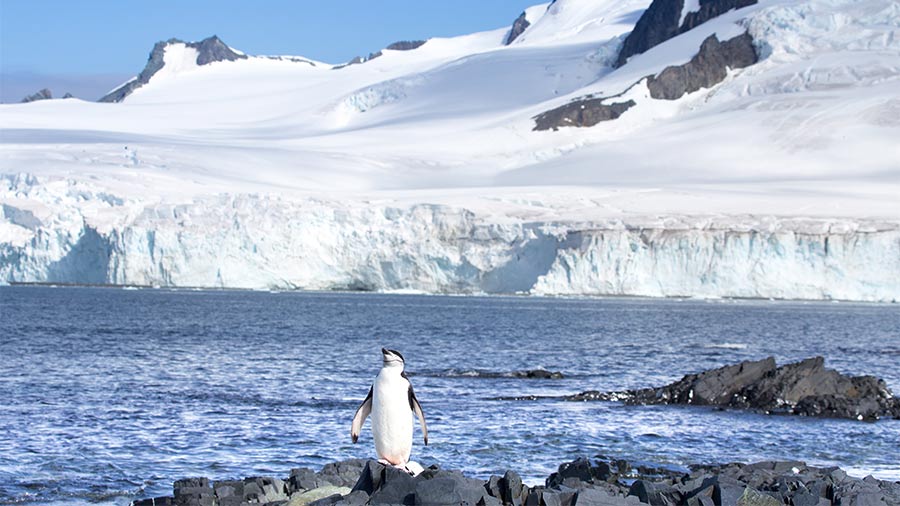The mystery of the forest and the thrill of sighting wildlife are unmatched. On World Wildlife Day, Team My Kolkata shares some favourite memories of meeting wildlife.
Read on and you may just find some experiences to add to your 2024 travelgram.
Rendezvous with a wild boar in Kumaon, Uttarakhand

Binsar Wildlife Sanctuary and (right) a makeshift shelter from wild animals on a mountain ridge in Binsar
The wildlife encounter that has stayed with me most vividly happened about 10 years ago, on a trek through the Binsar Wildlife Sanctuary in Kumaon, Uttarakhand. It was right after lunch on a clear and sunny but cold day in early March. My guide, Mahesh, and I were on our way up an infrequently used trail to a mountain ridge. We had just left the terraced fields on the periphery of the hamlet where we had stopped to eat, when Mahesh spotted leopard scat — possibly from the morning. He ran his eyes along the wooded slope that stretched out before us and joked that should a leopard ambush us then, we, after our hearty meal, did not stand much of a chance. We had barely moved a couple of strides past the scat, when we heard the crunch of leaves being trampled underfoot.
We froze and turned towards the sound. To our left, about 25 feet up the slope, stood three wild boars. Mahesh had mentioned boars to me, but like most tourists I had goaded him to tell me more about his encounters with the leopards. Now, the size of the boars making eye contact with us was making me uneasy. They were like 3ft-tall battle tanks. As Mahesh gestured to me to stand still, I wished I had found out from him what to do in such a situation. Two of the boars trundled away, calming my nerves. But the third stood still, staring at us. And then, quicker than we could panic, it charged. Straight at us, a bundle of fury powering through the gaps among the trees, its hooves blowing up a storm of dust. Perched on a 30-degree incline, we had no hope of escape. We did not even have the time to turn our backs to the boar before it reached us. Only to veer away, a fraction of a second before it was to ram into Mahesh, who had moved into its path to protect me from the impact. Without slowing down, the boar disappeared amid the vegetation. The dust took long to settle. Our heartbeats even longer.
— Kaushik Ghosh
Meeting the munchkins on Penguin Island in Penguin Island

Imagine hundreds of little penguins waddling across a beach under a moonlit sky, their movements synchronising like a dance troupe. They dash home across the sand, under the boardwalks, on which we stand, in search of their burrows after an eventful day out in the ocean. Every night, visitors can experience this adorable ‘penguin parade’ on Penguin Island in Western Australia, home to the largest Little Penguin colony in the world (estimated at 32,000). When we saw this little wonder of a show in March 2023, I think I was as excited as the children around me (which was half the visitor population). I found a vantage viewing point on the boardwalk, made myself comfortable and watched them flippers up, scurry and shuffle into the sandy embrace of their cosy burrows.
— Karo Christine Kumar
Date with a tiger in Bandhavgarh National Park in Madhya Pradesh
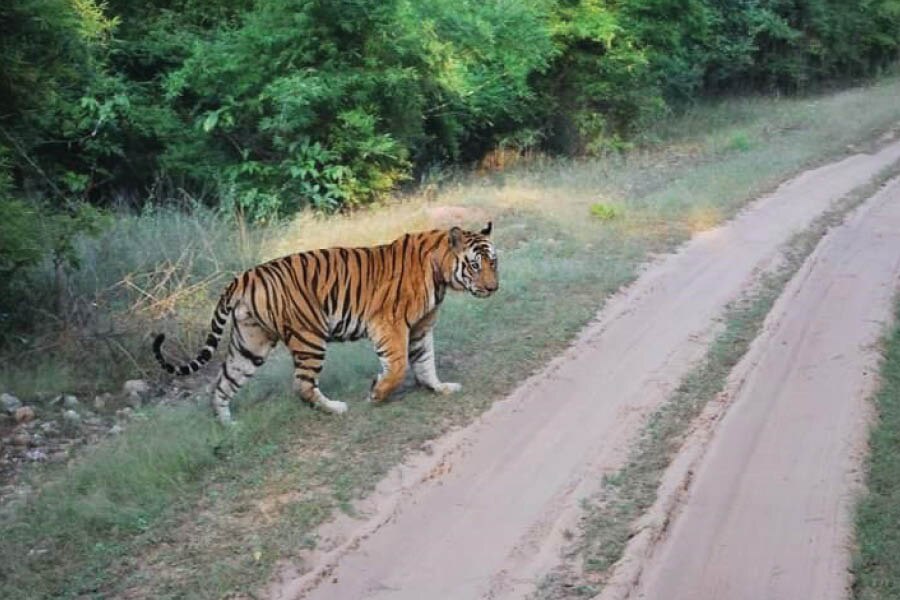
The creek was quiet and narrow and as our country boat negotiated the still water, the forest bent over so close that one could have almost touched the trees if one reached out. No wildlife was in sight but the air was heavy with anticipation and a feeling that we were being watched. The silent sigh of relief that our guide — an uncle-in-law who had lived in and loved the Sunderbans for the better part of his life — heaved as we left the forest behind was telltale.
It was a few years later, on a visit to Bandhavgarh, that I finally managed to encounter a tiger. It was our last safari and it was already getting dark. The experienced driver was eager to leave the forest, when our guide asked him to stop, take a turn and follow a trail. No sooner had our jeep joined a few more already waiting at the spot, the majestic animal sauntered across the road and sat under a tree, as if to allow shutterbugs enough photo-ops, before crossing the jungle path once again and fading into the trees.

If this meeting was regal, my second date with the stripes was rather thrilling. We were on a boat safari in Nagarhole, when we heard alarm calls. Elephants grazing by the Kabini river bank froze, as if they were playing a ‘game of statue’ and before we could realise what was happening, a herd of deer sprinted by, followed by a flash of yellow. As it dawned on us that we had indeed spotted a tiger in action, our boat steered a little ahead and there it was. By the riverbank, having a drink. We watched with bated breath as it got up, splashed some water on its body and then shook it off before walking back towards the forest, not before giving us a look into the camera.
— Sohini Bhattacharya
Meeting Muhoza in Rwanda, in East Africa
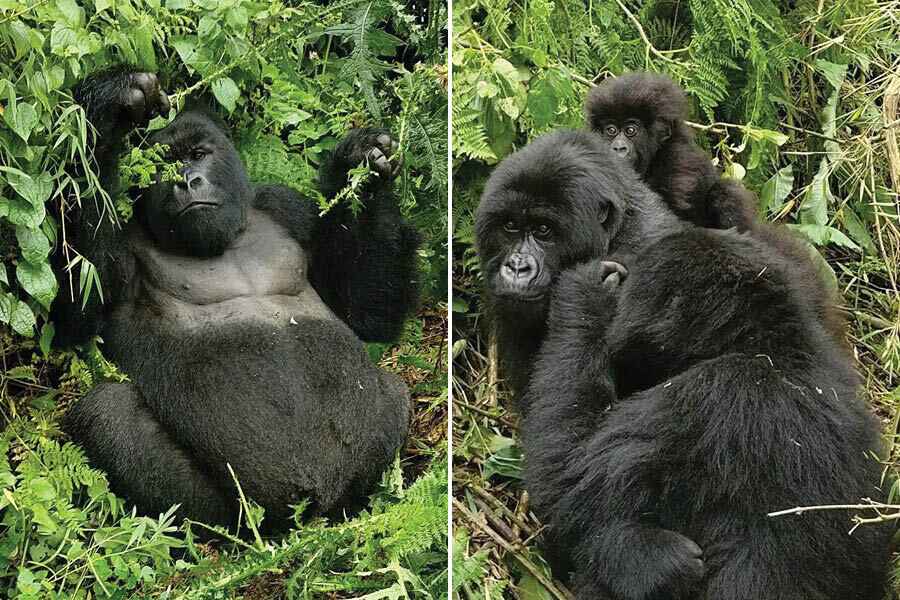
As Muhoza walked right towards me, all 200 kilograms of solid muscle, my heart was in my throat — sheer awe and a beat of fear going lub-dub beneath my ribcage. He stopped, about four feet away and sat down to munch on some leaves. In Rwanda’s Volcanoes National Park, within the last remaining natural habitat of Africa’s mountain gorillas, you are the guest in the home of the giants. Located in the volcanic Virungas Mountains that lie on the borders of Rwanda, Uganda and Democratic Republic of the Congo, the Volcanoes National Park is among the continent’s oldest reserves, and the site where English primatologist and anthropologist Jane Goodall worked for years.
Every day, only once a day, a definite number of groups trek through the mountain rainforest to visit some of the gorilla families that reside in these mountains. In 2017, I was among the lucky few to undertake the journey. Slipping, sliding and with the help of forest guards, we reached a clearing bordered by stinging nettles and other vegetation to meet a small family of African mountain gorillas — an alpha male (the silverback Muhoza) along with an alpha female, a couple of other females, a few juveniles and some wide-eyed little ones. Crouching beside the bushes of nettles, and looking at these gentle but veritable giants only a few feet away from you with no bars to separate you is an experience indescribable in words. They ate, played with their babies and just existed, all the while keeping a watchful eye on us, the visitors, and even let us know with a huff or a grunt, when we were too close for comfort.
Muhoza’s stern face, his alpha female’s commanding presence, the soulful eyes of the little one on the back of a young female, named Gobita — these images, along with the pacy beating of my heart will remain forever in my memory, as clear as they were on that misty day seven years ago.
We spent an hour with the gorillas as they went about their day and we watched them, carefully taking photos. We finished the almost four-hour journey back to the plains, and finally when we halted — exhausted and with mud-caked boots — I felt like I could breathe again. I turned to a co-traveller, we looked at each other as if making sure this really happened and the next moment we were hugging each other and weeping because the joy just could not be contained.
— Rumela Basu
An unexpected wild encounter on the way from Mysore to Ooty

It was during our road trip from Mysore to Ooty, way back in October 2016, when something truly wild happened — and I’m not talking about our (zero) driving skills here. Little did we know, the Mysore-Ooty National Highway cuts right through Bandipur Tiger Reserve, offering us a front-row seat to nature’s show. All of a sudden, we noticed herds of spotted deer, elephants, mischievous monkeys, langurs and colourful peacocks just chilling in their natural habitat. The only downside? We couldn’t stop to get a closer look, as that’s not allowed, so we missed out on seeing — what we were hoping against hope — a tiger. The weather was just perfect, adding magic to the moment. While my friends and I usually prefer beach trips to wildlife safaris, this experience was something else! It’s a memory that has stuck with us, a wild detour from our usual coastal adventures, reminding us of nature’s beauty beyond the sea’s edge.
— Jaya Biswas
Learning from nature — reflections from Masinagudi in Tamil Nadu

My wildlife experiences have been few and far between. I’ve been to the Sunderbans but didn’t spot a tiger. I’ve been on quite a few jungle safaris, but those too were unsuccessful. The closest I came to spotting wildlife was during a trip to Masinagudi, Tamil Nadu. It was a post-ICSE exam break, when my family decided to spend a month there. We travelled by road. The day we reached the resort, we wanted to explore a bit. In the evening we followed a few open hooded vehicles on the highway. We had not gone very far when we spotted a baby elephant and then — a whole herd. As some cars tried to get closer, the elephants became agitated and moved towards the cars, including ours, which was stuck half off the road because its height wasn’t enough to stay on and off the road without scraping the bottom. After managing a few clicks, my step-sister, who was probably three then, excitedly screamed, “Ephalant”, instead of elephant, which lightened the mood. The basic takeaway from the trip was a practical understanding of human encroachment into nature and its impact on animals in their natural habitat. With a much lower quality phone, back then in 2016, I still got a few snaps but it was nothing compared to what I saw with my own eyes. While it wasn’t as thrilling as seeing tigers or lions, it still gave me a significant adrenaline rush.
— Debrup Chaudhuri
Hello Hollong, hope to see you soon again…

It was my first long road trip to the jungles after a while, and honestly, living amidst nature is a plan that I can never say no to. So, a group of four, who share the same passion for wilderness, took a trip to Hollong in north Bengal, welcoming 2024. While getting rooms in Hollong was a matter of perseverance, we knew we had ticked a bucket list. Two rooms of the Hollong bungalow overlook the salt lick, and the property is surrounded by jungle. Luckily, we had one of the front-facing rooms, but we spent most of our time on the steps near the salt lick. Hollong is also home to birds, both known ones, like parrots, and several unfamiliar species. Peahens and peacocks are a common sight, and even though it wasn’t during the monsoon, we were treated to the mesmerising sight of peacocks in all their splendour.
On the first day, as evening approached, the first wildlife sighting was a deer with a fawn. Just as we were eagerly anticipating more sightings, two rhinos emerged slowly from the jungle. The deer herd was on its own until then, the fawn having a merry time under adult supervision. The presence of the rhinos — an adult and a calf — changed the game. The adult deer was now alert — eyeing the two rhinos and keeping the li’l one close. The adult rhino, on the other hand, was also alert, maintaining a safe distance. But, as they say, kids are kids, and the tension soon subsided because the rhino calf too was a playful one, nudging the elder one and playing peek-a-boo by hiding behind. For us, witnessing wildlife at such close quarters was a blink-and-miss experience. But what really left a lasting impression and still brings a smile to our faces is how the little ones seemed more than willing to play together, if given a choice.
— Pooja Mitra



